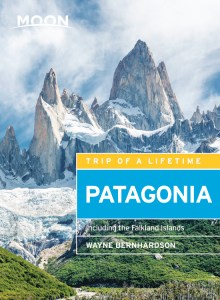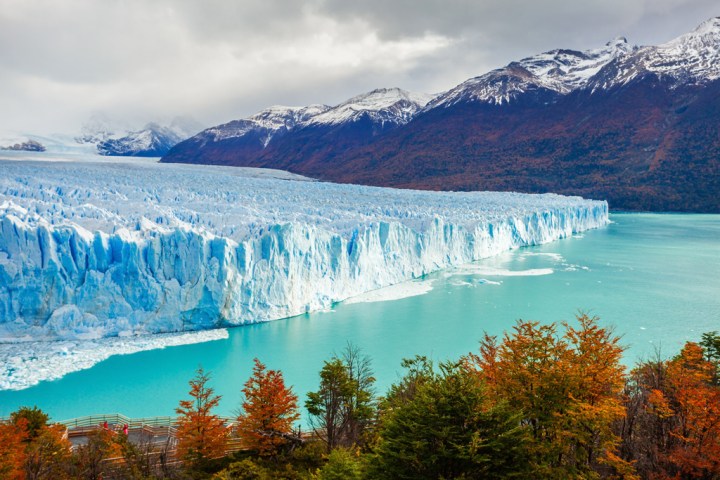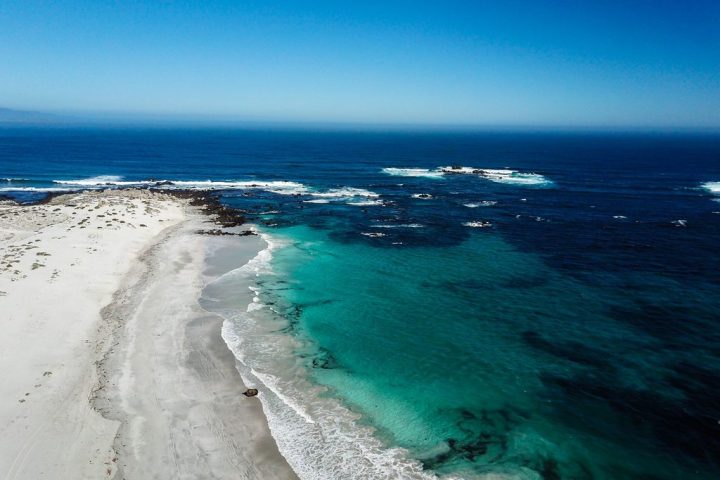Chile’s Punta Arenas: Museums and Historic Sites
Patagonia’s largest city, Punta Arenas is also the regional capital and the traditional port of entry, whether by air, land, or sea. Stretching north-south along the Strait of Magellan, the city boasts an architectural heritage that ranges from the Magellanic vernacular of corrugated metal-clad houses with steeply pitched roofs to Francophile mansions commissioned by 19th-century wool barons. Home to several museums, it’s a base for excursions to historical sites, nearby penguin colonies, and whale-watching areas.
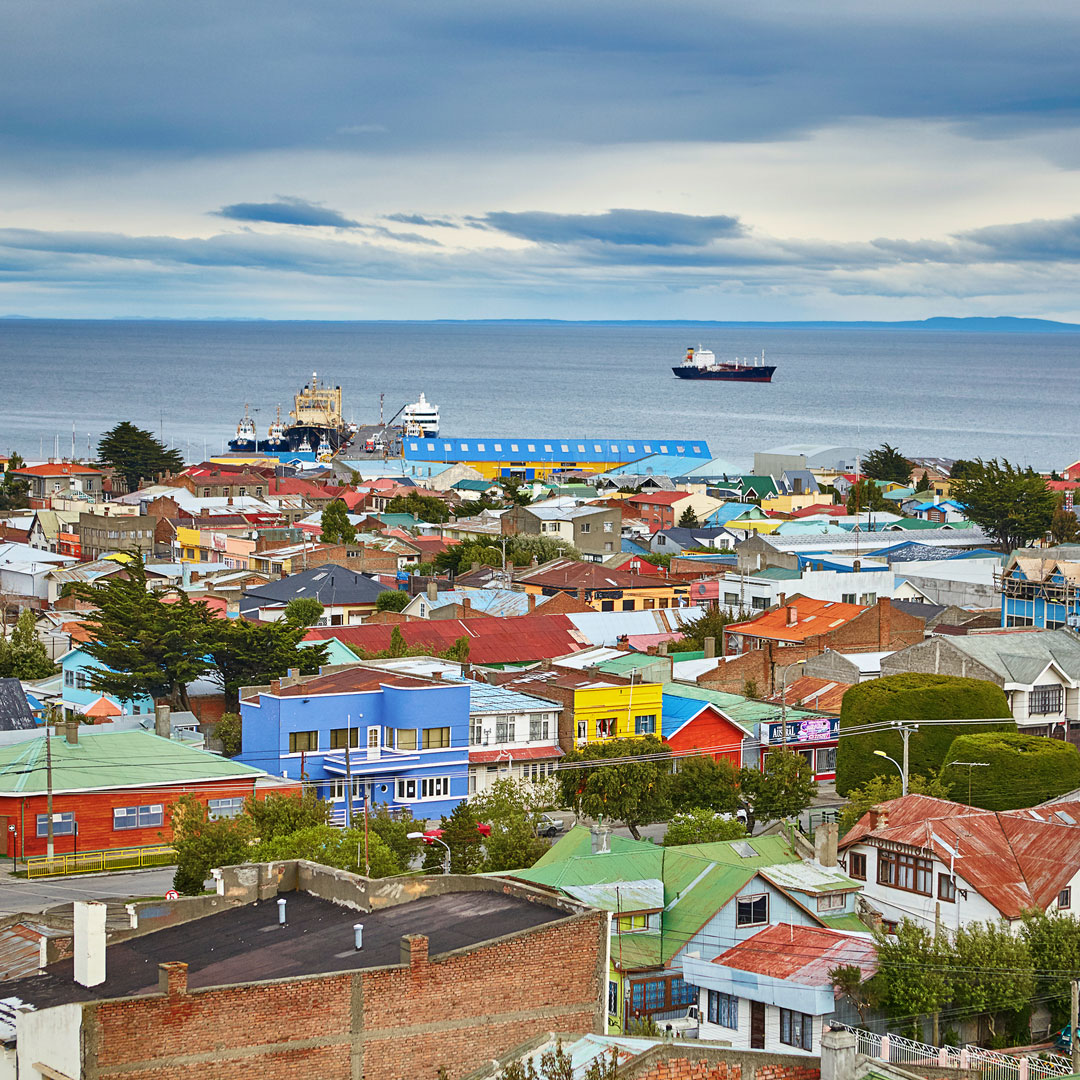
Plaza Muñoz Gamero and Vicinity
Unlike plazas founded in colonial Chilean cities, Punta Arenas’s central plaza, Plaza Muñoz Gamero, was not the initial focus of civic life, but thanks to European immigration and wealth generated by mining, livestock, commerce, and fishing, it became so by the 1880s. Landscaped with Monterey cypress and other exotic conifers, the plaza and surrounding buildings constitute a zona típica national monument.
It takes its name from early provincial governor Benjamín Muñoz Gamero, who died in an 1851 mutiny. Among its features are a Victorian kiosk (1910), sporadically housing the municipal tourist office, and sculptor Guillermo Córdova’s elaborate monument, which was sponsored by wool magnate José Menéndez on the 400th anniversary of Magellan’s 1520 voyage. Magellan’s figure, embellished with a globe and a copy of his log, stands above a Selk’nam indigenous person representing Tierra del Fuego, a Tehuelche person symbolizing Patagonia, and a mermaid with Chilean and regional coats-of-arms. According to local legend, anyone touching the Tehuelche’s toe—enough have done so to alter its color—will return to Punta Arenas.
After about 1880, the city’s burgeoning elite began to build monuments to their own good fortune, such as the ornate Palacio Sara Braun (1895) at the plaza’s northwest corner. Only six years after marrying José Nogueira, Punta’s most prominent businessman, the newly widowed Sara contracted French architect Numa Mayer, who applied contemporary Parisian style to create a two-story mansard that helped upgrade the city’s earlier utilitarian architecture. Now home to the Club de la Unión and Hotel José Nogueira, the building retains most original features, including the west-facing winter garden that now serves as the hotel’s bar-restaurant.
Mid-block, immediately east, the Casa José Menéndez belonged to another of Punta’s wool barons. At the plaza’s northeast corner stands the former headquarters of the influential Sociedad Menéndez Behety (Magallanes 990). Half a block north, dating from 1904, the Casa Braun-Menéndez (Magallanes 949) houses the regional museum.
On the plaza’s east side, immediately south of Hotel Cabo de Hornos, the Instituto Antártico Chileno is the site of Chile’s Antarctic research entity. Several other buildings in surrounding streets bear plaques attesting to their role in exploration of the frozen continent. On the south side, directly opposite the Victorian tourist kiosk, the former Palacio Montes holds municipal government offices. At the southeast corner, the Sociedad Braun Blanchard belonged to another powerful commercial group (as the names suggest, Punta Arenas’s first families were, commercially at least, an incestuous bunch).
At the southwest corner, the Iglesia Matriz (1901) now enjoys cathedral status. Immediately north, both the Residencia del Gobernador (Governor’s Residence) and the Gobernación date from the same period, filling the rest of the block with offices of the Intendencia Regional, the regional government.
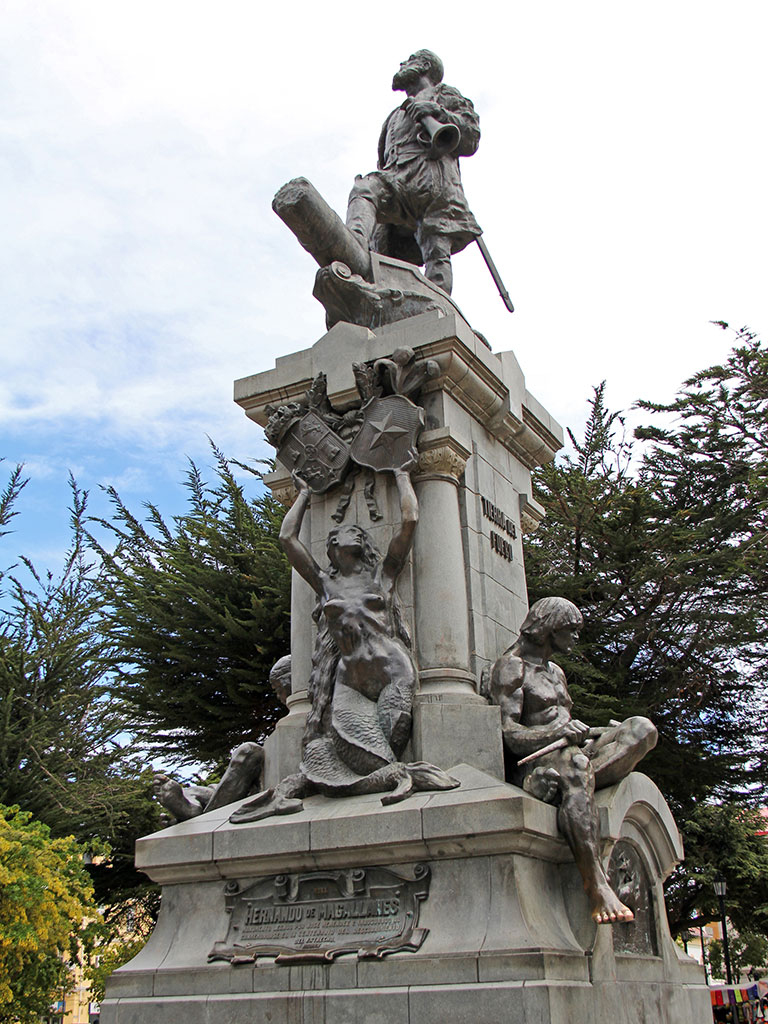
Casa Braun-Menéndez
Like European royalty, Punta’s first families formed alliances sealed by matrimony, and the 1904 Casa Braun-Menéndez (Magallanes 949, tel. 061/224-2049, 10:30am-5pm Wed.-Mon., free) is a classic example: the product of a marriage between Mauricio Braun (Sara’s brother) and Josefina Menéndez Behety (daughter of José Menéndez and María Behety, a major wool-growing family in Argentina, though international borders meant little to the wool barons).
Still furnished with the family’s belongings, preserving Mauricio Braun’s office and other rooms virtually intact, the house boasts marble fireplaces and other elaborate architectural features. The basement servants’ quarters expose the early-20th-century’s upstairs-downstairs divisions. Part of it now serves as a gallery for special exhibits.
Today, the Casa Braun-Menéndez serves as the regional museum, replete with panels on pre-Columbian peoples, pioneer settlers’ artifacts, and historical photographs. There are imperfect but readable English descriptions of the exhibits. On some days, a pianist plays beneath the atrium’s stained-glass skylight.
Museo Regional Salesiano
From the 19th century, the Salesian order played a key role in evangelizing southern Patagonia and Tierra del Fuego, on both sides of the border. Punta Arenas was their base. While their rosy view of Christianity’s impact on the region’s indigenous people may be debatable, figures such as the Italian mountaineer priest Alberto de Agostini (1883-1960) made key contributions to both physical geography and ethnographic research.
Today, a sizable collection of Agostini’s photographs can be found in the Museo Regional Salesiano Mayorino Borgatello (Av. Bulnes 336, tel. 061/222-1001, 10am-12:30pm and 3pm-6pm Tues.-Sun., free), which also has a library and a regionally oriented art gallery. Permanent exhibits deal with regional flora and fauna (including the whaling industry), a handful of early colonial artifacts, regional ethnography with dioramas, the missionization of Isla Dawson and other nearby areas, cartography, and the petroleum industry. For Darwinians, there’s a scale model of the Beagle and, for Chilean patriots, one of the Ancud, which sailed from Chiloé to claim the region in 1843.
Museo Naval y Marítimo
Pleasantly surprising, the Museo Naval y Marítimo (Pedro Montt 981, tel. 061/220-5479, 10am-5:30pm Tues.-Sun., US$1.50 adults, US$0.50 children) provides perspectives on topics like ethnography in the context of the Strait of Magellan’s seagoing peoples, even while stressing its military mission. It features interactive exhibits, such as a credible warship’s bridge, a selection of model ships, and information on the naval history of the southern oceans.
Museo del Recuerdo
Run by the Instituto de la Patagonia, part of the Universidad de Magallanes, the Museo del Recuerdo (Av. Bulnes 01890, tel. 061/220-7056, 8:30am-11:30am and 2:30pm-6:30pm Mon.-Fri., 8:30am-12:30pm Sat., free) is a mostly open-air facility of pioneer agricultural implements and industrial machinery, reconstructions of a traditional house and shearing shed, and a restored shepherd’s trailer house, hauled across the Patagonian plains on wooden wheels. In addition to a modest botanical garden, the institute has a library-bookshop with impressive cartographic exhibits.
The museum can be reached from downtown Punta Arenas by taxis colectivos to the duty-free Zona Franca, which stop directly opposite the entrance.
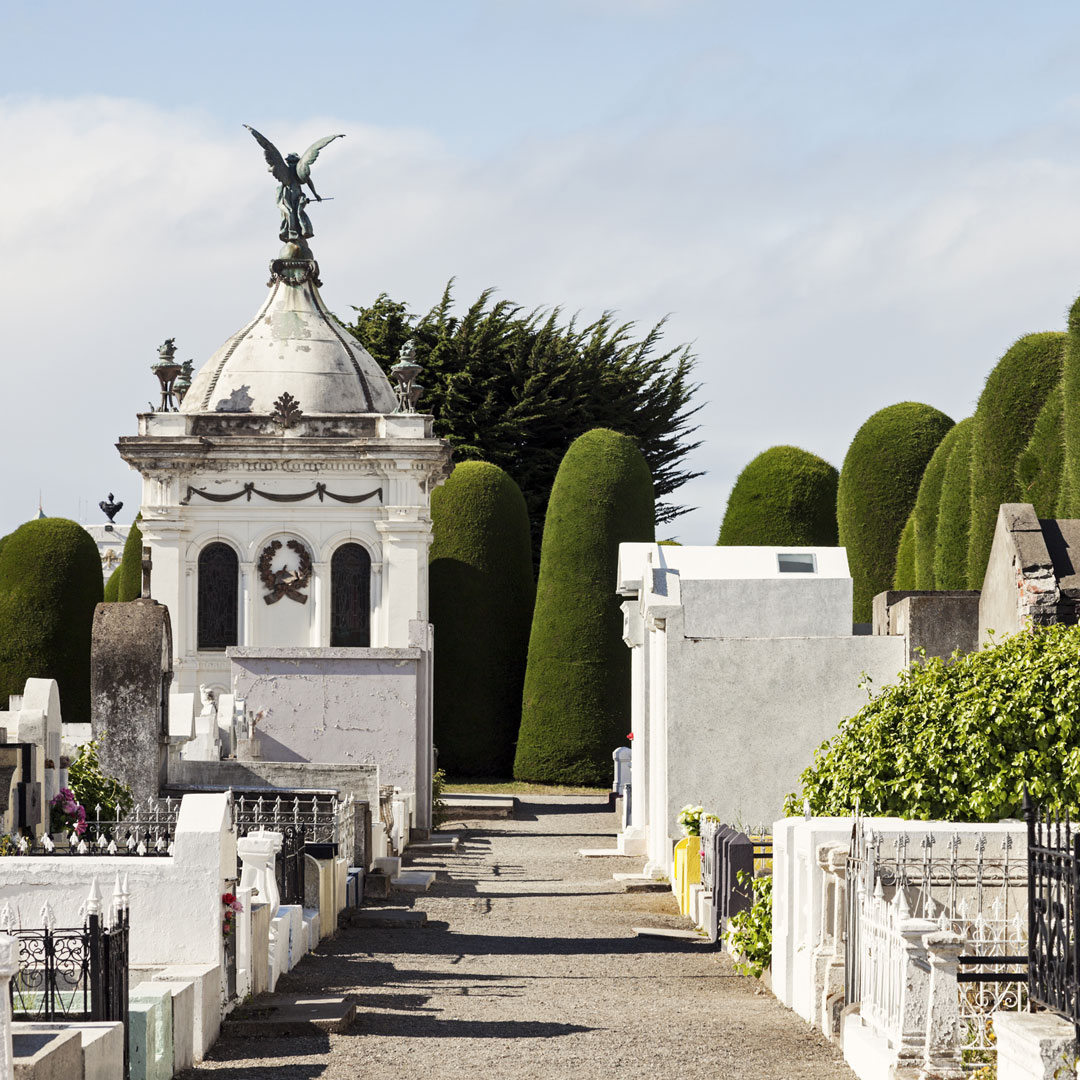
Other Punta Arenas Activities and Sights
For a panoramic overview of the city’s layout, the Strait of Magellan, and the island of Tierra del Fuego in the distance, climb to Mirador La Cruz, four blocks west of Plaza Muñoz Gamero via a staircase at the corner of the Fagnano and Señoret.
Four blocks south of Plaza Muñoz Gamero, naval vessels, freighters, cruise ships, Antarctic icebreakers, and yachts from many countries dock at the Muelle Fiscal Arturo Prat (at the foot of Av. Independencia), until recently the city’s major port facility. It’s still a departure point for cruises to the fjords of Tierra del Fuego and to Antarctica, but, unfortunately, international security hysteria has closed it to spontaneous public access.
The late Bruce Chatwin found the inspiration for his legendary vignettes of In Patagonia through tales of his eccentric distant relative Charley Milward, who built and resided at the Castillo Milward (Milward’s Castle, Av. España 959). Described by Chatwin as “a Victorian parsonage translated to the Strait of Magellan,” with “high-pitched gables and gothic windows,” the building features a square street-side tower and an octagonal one at the rear.
The seven-meter Mural Gabriela Mistral (corner of Av. Colón and O’Higgins) graces the walls of the former Liceo de Niñas Sara Braun (Sara Braun Girls’ School) in honor of Chile’s Nobel Prize-winning poet.
Ten blocks north of Plaza Muñoz Gamero, the Cementerio Municipal Sara Braun (Av. Bulnes 029) is home to the extravagant crypts of José Menéndez, José Nogueira, and Sara Braun. The multinational immigrants who worked for them—English, Scots, Welsh, Croat, German, and Scandinavian—repose in more modest circumstances. A separate monument honors the vanished Selk’nam (Ona) people who once flourished in the Strait, while another memorializes German fatalities of the Battle of the Falklands (1914).

Related Travel Guides
Snow-covered mountains, bustling cities, temperate rainforests, and coastal wineries: get to know this country of contrasts with Moon Chile.
By clicking ‘Sign Up,’ I acknowledge that I have read and agree to Hachette Book Group’s Privacy Policy and Terms of Use
